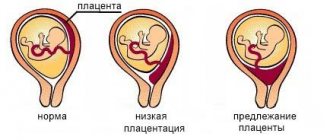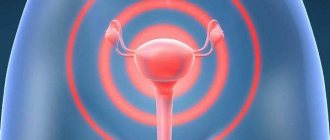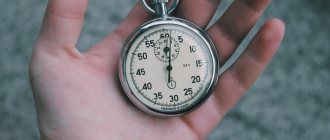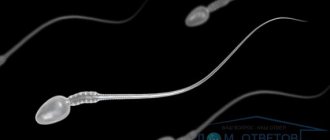Diagnostics
The attending physician prescribes treatment depending on the indicators obtained from the spermogram and other diagnostic data, the causes of impaired motility and sperm quality.
Diagnosis of the disease includes a mandatory spermogram. Ejaculate is submitted for laboratory testing at least twice with an interval of two weeks, as well as after completing a course of treatment to assess the effectiveness of therapeutic measures.
Before donating biological material, it is important for a man to follow all the preparation rules: avoid sexual intercourse for five days, do not drink alcohol, coffee, stop smoking and visiting the bathhouse and sauna.
If such abnormalities are noted after a spermogram, it is necessary to take a blood test for hormones.
Our readers recommend
Our regular reader got rid of problems with potency using an effective method. He tested it on himself - the result was 100% - complete relief from problems. This is a natural herbal remedy. We tested the method and decided to recommend it to you. The result is fast. EFFECTIVE METHOD.
The diagnosis of asthenoteratozoospermia is made when the number of actively motile sperm decreases to less than 25% of the total number of sperm in the ejaculate. After a spermogram, a man who experiences such disorders should undergo additional diagnostic methods (ultrasound of the genitourinary organs, blood test for hormones) and consult with specialists (endocrinologist, therapist and others).
After combining all the research results, the doctor decides how to treat asthenoteratozoospermia.
What is asthenoteratozoospermia in men
What kind of diagnosis is this? Asthenoteratozoospermia is a pathology in which the quality of male sperm is significantly reduced, namely, the structure of sperm is disrupted and, as a result, their speed is reduced .
There are several degrees of severity:
- 1st degree. Sperm contains at least 50% of cells with normal structure and mobility.
- 2nd degree. The number of healthy sperm is 30-50%.
- 3rd degree. The number of motile sperm is less than 30%. This indicator is the reason for making a diagnosis of male infertility.
Drug treatment
Treatment of asthenoteratozoospermia is carried out in two directions:
- Normalization of sperm activity.
- Increasing the quality components of sperm.
In order to obtain the maximum effect from the treatment of asthenoteratozoospermia, it is necessary to follow the recommendations of the treating doctor: adjust your diet, give up bad habits and treat the root causes that led to sperm pathology.
Antibacterial therapy for asthenoteratozoospermia is used for inflammation of the genital organs, which has led to a violation of the quantity and quality of seminal fluid. For genital infections, it is recommended that both spouses undergo treatment to prevent re-infection and conceive a healthy child. The duration of antibiotic treatment ranges from one to three weeks.
It is possible to restore erectile function! Proven FOLK CARE ... Reviews My story spotenciey.ru
Treatment of PROSTATITIS using a new method To restore the functions of the prostate, you need every day... Website Interview with a doctor bezprostatita.ru
The problem of the small size of the dignity has been solved. The mechanism of erection has been revealed... Official website Recovery bigbigrazmer.ru
To improve testosterone synthesis and sperm production, your doctor may prescribe the drug Speman
In addition to antibacterial drugs, a course of immunomodulators, enzymes and probiotics is prescribed with a similar course duration. At the same time, it is necessary to monitor the vitamin-mineral complex, which can be normalized and supplemented by taking vitamins. For men, a doctor may prescribe herbal medicines to improve testosterone synthesis and sperm production, the most popular of which are Trimestan and Speman. The course of herbal medicine can also be continued after the end of treatment to maintain male reproductive function (after consultation with a urologist-andrologist).
When the cause of infertility is a hormonal imbalance, hormonal steroid drugs, products containing zinc, selenium and vitamin E, which regulate testosterone production and are responsible for men's health, are used to treat asthenoteratozoospermia.
In case of anomalies and pathologies of the structure of the organs of the genitourinary system (varicocele, hydrocele, narrow seminal ducts, cryptorchidism and others), surgical correction of the abnormalities is required. At this time, the doctor will recommend taking a vitamin-mineral complex, as well as medications that have a general strengthening and immunostimulating effect.
Genetic disorders and hereditary factors are causes that most often cannot be treated. In such a case, it is recommended to use modern fertilization technologies - IVF and ICSI methods. To carry it out, all research results will be required, as well as additional donation of ejaculate for the selection of biomaterial for artificial insemination.
If you have asthenoteratozoospermia, you should avoid fried, spicy, and overly salty foods.
What is the probability of conceiving a child with asthenoteratozoospermia?
The main thing is to understand that illness is not a death sentence for a couple . A positive emotional attitude, competent diagnosis and compliance with all doctor’s instructions help many families to have a child.
If drug therapy does not give the desired result, the couple may be offered to resort to the IVF procedure. Only healthy sperm are selected from the man's seminal fluid. The fertilization process in this case occurs under artificial conditions.
Nutrition adjustments and preventive measures
The fast pace of life, constant employment, unhealthy diet, sedentary lifestyle, emotional and psychological stress often lead to stagnant processes in the pelvic area. Impaired blood flow reduces male strength and chances of fertilization. This can be corrected with the help of special physical exercises to improve blood circulation, frequent walking, cardio training, diet correction and treatment of asthenoteratozoospermia using traditional medicine.
Regarding the diet for asthenoteratozoospermia, you need to:
- Exclude: fried, spicy, overly salty foods, alcohol, coffee, sweet carbonated drinks.
- Supplement and diversify your diet:
- leafy vegetables (contain vitamin E and selenium): cilantro, cabbage of any kind, parsley, spinach and others;
- nuts, including walnuts, almonds, hazelnuts and seeds (sunflower and pumpkin). Rich in vitamin E, arginine, magnesium, zinc, Omega-3 acids and other vitamins and minerals that are necessary to normalize sperm quality;
- fruits (contain a wide range of vitamins and minerals): kiwi, pomegranate, raspberries, citrus fruits and others;
- seafood products (fish, midi, especially oysters). Contains zinc, selenium and magnesium necessary for men;
- Butter and chicken eggs contain essential elements to maintain the integrity and production of cellular structures.
Herbal medicine can help with any problems with potency, including asthenoteratozoospermia
Prevention
Pathology is always easier to prevent than to cure, which is why you should beware of those factors in everyday life that can increase the risk of developing asthenoteratozoospermia.
As a preventive measure and precautionary measures, the following important points should be noted:
- maintaining an active lifestyle, proper and rational nutrition (food should be natural and rich in vitamins and macro/microelements);
- cessation of smoking, consumption of strong alcoholic beverages and drugs;
- refusal to wear tight and uncomfortable underwear made from synthetic fabric;
- minimizing stressful situations;
- body weight control (going to the gym will be beneficial, but obesity can have a bad effect on a man’s reproductive system);
- reducing the frequency of visits to saunas and baths;
- regular examination for the presence of infectious diseases in the body.
In this article, we examined in detail the causes and methods of treating asthenoteratozoospermia.
Now you know what it is and whether it is possible to conceive a child using IVF with this disease. But the most important thing is to follow preventive measures, and then the problem may never overtake you. Pregnancy Health Disease Conception
Phytotherapy
Traditional medicine for any problems with potency, including asthenoteratozoospermia, recommends using the following treatment agents:
- Honey in combination with nuts (any) or seeds (pumpkin seeds are more useful) will help normalize the quality and quantity of sperm. To prepare an effective product, you need to take the components in a 1:1 ratio and mix. Take 5-10 g several times a day.
- Plantain decoction will help increase sperm activity. For cooking you will need 1 tbsp. spoons of plantain seeds and leaves. Pour 400-500 ml of boiled water and leave. Take 100 ml of warm and fresh decoction before each meal.
- Ginseng tincture can increase male fertility and the synthesis of male germ cells. For which you need to take 2 tbsp. l. chopped root and pour 1 tbsp. vodka, leave for 7-10 days. Take 1 tsp. twice a day.
- Nettle decoction will improve the functioning of the genital organs and normalize metabolic processes: 1 tbsp. l. herbs pour 200 ml of water and leave. Drink during the day.
- It is also useful to drink tea with thyme: 1 tbsp. l. dried herbs per 1 tbsp. boiling water Infuse and drink.
In order for the desired pregnancy to occur after a diagnosis of asthenoterotozoospermia, it is necessary to follow the doctor’s recommendations regarding taking medications, change the rhythm of life and diet. To speed up the process of normalizing sperm quality, improving fertility and preventing men's health problems, you can use traditional medicine recipes.
Causes of pathology
When studying pathology, experts found that chronic inflammatory and infectious pathologies of the male genital area play a major role in development. Particularly dangerous is viral mumps, or mumps, which a boy can contract in childhood. If a man becomes infected as an adult, the risk of remaining infertile is very high. With poor treatment, mumps causes testicular atrophy.
The same consequences for the body can be caused by common STIs - herpes type 2, chlamydia, gonorrhea, trichomoniasis and others. They negatively affect the quality of sperm, especially with prolonged absence of therapy. Nonspecific infections (orchitis, prostatitis, epididymitis) also have a bad effect on the male reproductive system. Risk factors for the occurrence of asthenoteratozoospermia that act throughout life are recognized as:
- Injuries of the testicles, appendages;
- Wearing tight synthetic underwear;
- UV rays, x-rays, radiation;
- Drug addiction, alcoholism;
- Hormonal disorders (decrease in testosterone, increase in prolactin, estrogen, etc.);
- Thyroid diseases;
- Diabetes;
- Poor, monotonous diet, vitamin deficiencies.
Abuse of baths, saunas, and hot baths also harms sperm, because they mature at low temperatures and die when it rises. Also, with congenital defects of the structure of the testicles, a man may have asthenoteratozoospermia, for example, with testicular hypoplasia, anorchism, monorchism.
Decoding the spermogram
Since 2010, WHO has established the following normal limits for spermogram:
- ejaculate volume is at least 1.5 ml;
- the total number of sperm is at least 33 million;
- sperm concentration from 12 to 16 million in 1 ml of ejaculate;
- motile sperm of group A (the most mobile and most promising for fertilization) 31-34%;
- sperm of group B (less mobile, forward movement) and group A in total should be 38-42%;
- viable sperm 55-63%;
- morphologically healthy cells at least 4%;
- acidity more than 7.2 pH;
- leukocytes less than 1 million/ml.
The examination of the ejaculate should be carried out no later than 1 hour after ejaculation. With asthenoteratozoospermia, the number of sperm of groups C and D (immobile and sedentary cells that have no chance of conception) predominates in the seminal fluid. The diagnosis must be confirmed by three spermograms, which should be carried out at intervals of 14 days for the greatest accuracy of the study.










